Tips & Tricks for Leveraging Employee Onboarding Software
Employee onboarding is a critical process that sets the tone for new hires’ experiences within your organization. Leveraging employee onboarding software can streamline this process, enhance engagement, and ensure new employees feel welcomed and prepared.
Importance of Finding the Best Employee Onboarding Software
Finding the best employee onboarding software is crucial for organizations looking to streamline and enhance their onboarding processes. It ensures that new hires receive a seamless and engaging experience from day one, significantly impacting impacts their productivity, engagement, and retention.
The right software can automate routine tasks, personalize onboarding journeys, ensure compliance with regulations, and integrate smoothly with existing HR systems.
Here are the tips for leveraging Employee Onboarding Software
Define Clear Objectives
Setting clear objectives is the foundation of a successful onboarding process. Define what you want to achieve with your onboarding program, such as improving time-to-productivity, boosting employee retention, or enhancing cultural integration. Employee onboarding software can help by providing analytics and reporting features that track these objectives over time.
Action Steps:
- Identify Key Metrics: Determine specific metrics you want to measure, such as completion rates of onboarding tasks or feedback ratings from new hires.
- Align with Organizational Goals: Ensure your onboarding objectives align with broader company goals to demonstrate its impact on business outcomes.
- Use Software Features: Utilize the software’s dashboard and reporting tools to monitor progress and make data-driven decisions for continuous improvement.
Personalize the Onboarding Experience
Personalization makes new hires feel valued and accelerates their integration into the company culture. Use employee onboarding software to customize onboarding workflows, training materials, and communication based on the new hire’s role, department, and preferences.
- Tailored Welcome Messages: Automate personalized welcome emails or messages that highlight specific job responsibilities and team introductions.
- Role-Specific Training Paths: Create customized training paths within the software that align with the new hire’s job requirements and career development goals.
- Feedback Mechanisms: Use surveys or feedback forms integrated into the software to gather insights on the new hire’s onboarding experience and adjust personalized elements accordingly.
Automate Routine Tasks
Automation reduces administrative burdens and ensures consistency in the onboarding process. Leverage employee onboarding software to automate repetitive tasks such as document management, task assignments, and compliance checks.
- Electronic Document Signing: Implement e-signature capabilities to streamline the signing of contracts, policies, and other onboarding documents.
- Task Reminders: Set up automated reminders and notifications for new hires and HR personnel to complete specific onboarding tasks on time.
- Workflow Automation: Use workflow templates within the software to standardize the onboarding process across different departments or locations, reducing manual intervention.
Create Interactive and Engaging Content
Engaging content enhances learning retention and keeps new hires motivated throughout the onboarding journey. Utilize the interactive features of onboarding software to deliver engaging training modules and onboarding materials.
- Multimedia Integration: Incorporate videos, infographics, and interactive quizzes into training modules to make learning more dynamic and memorable.
- Gamification Elements: Introduce gamification elements such as badges, points, or progress bars to incentivize completion of onboarding tasks and foster friendly competition among new hires.
- Virtual Tours or Simulations: Use virtual reality (VR) or 360-degree videos within the software to provide immersive experiences, such as virtual office tours or simulations of real-life work scenarios.
Foster Early Connections
Building connections early helps new hires feel welcome and connected to their colleagues and the organization’s culture. Leverage employee onboarding to facilitate communication and collaboration from day one.
- Virtual Meet-and-Greets: Schedule virtual meet-and-greet sessions using video conferencing tools integrated into the software to introduce new hires to their team members and key stakeholders.
- Social Collaboration Tools: Utilize chat rooms, discussion boards, or social feeds within the software to encourage interaction and networking among new hires.
- Buddy or Mentor Assignments: Assign mentors or buddies through the software to provide guidance, answer questions, and offer support during the onboarding process.
Provide Continuous Feedback and Support
Continuous feedback helps new hires adjust and improve, fostering a culture of ongoing learning and development. Use onboarding to facilitate regular check-ins and feedback loops.
- Scheduled Check-ins: Use the software’s scheduling feature to automate regular check-in meetings between new hires and their managers or HR representatives.
- Feedback Surveys: Deploy surveys or feedback forms within the software to gather insights on the new hire’s experience, challenges faced, and suggestions for improvement.
- Real-time Support: Provide access to a knowledge base or help center within the software where new hires can find answers to common questions or seek assistance from HR or IT support teams.
Streamline Compliance and Documentation
Ensuring compliance with legal and company policies is crucial for risk management and operational efficiency. Employee onboarding software can centralize compliance tasks and document management to streamline this process.
- Compliance Tracking: Use the software to track and manage completion of mandatory training programs, certifications, and regulatory requirements.
- Document Management: Store and organize all necessary onboarding documents securely within the software, ensuring accessibility and compliance with data protection regulations.
- Audit Trails: Maintain audit trails and version control for onboarding documents to track changes and ensure accuracy and compliance.
Integrate with Other HR Tools
Integration with other HR systems enhances data consistency and operational efficiency across various HR functions. Leverage software to integrate seamlessly with your HRIS, payroll, performance management, and learning management systems.
- Data Syncing: Ensure data synchronization between software and other HR systems to eliminate duplicate data entry and maintain data integrity.
- Single Sign-On (SSO) Integration: Implement SSO integration to provide a seamless user experience and enhance security when accessing multiple HR applications.
- API Connectivity: Use APIs to facilitate real-time data exchange and automate workflows between different HR platforms, improving overall system interoperability.
Measure and Optimize the Onboarding Process
Continuous measurement and optimization of the onboarding process are essential for identifying areas of improvement and maximizing its effectiveness. Utilize the analytics and reporting capabilities of employee onboarding software to track key metrics and performance indicators.
- Key Performance Indicators (KPIs): Define and monitor KPIs such as time-to-productivity, new hire retention rates, and satisfaction scores related to the onboarding experience.
- Benchmarking: Compare onboarding performance metrics over time or against industry benchmarks to identify trends, successes, and areas needing improvement.
- Iterative Improvement: Use insights gained from analytics to make data-driven adjustments to the onboarding process, optimizing workflows, content, and engagement strategies accordingly.
Develop a Consistent Brand Experience
Consistency in branding reinforces your organization’s identity and values, helping new hires align with company culture and goals. Use employee onboarding software to deliver a cohesive brand experience throughout the onboarding journey.
- Branded Onboarding Materials: Customize onboarding templates, communications, and training materials with consistent branding elements such as logos, colors, and messaging.
- Cultural Alignment: Incorporate company values, mission statements, and success stories into onboarding content to familiarize new hires with the organization’s culture and purpose.
- Employee Testimonials: Include testimonials from current employees or executives within the onboarding software to showcase the company’s culture and promote a sense of belonging.
Enable Self-Paced Learning
Offering self-paced learning opportunities empowers new hires to take control of their onboarding experience and facilitates knowledge retention. Use software to provide access to a library of resources and training modules that new hires can explore at their own pace.
- Resource Library: Curate a comprehensive library of onboarding materials, FAQs, and job-related resources within the software for easy access and self-guided learning.
- Progress Tracking: Implement progress-tracking features that allow new hires to monitor their completion status and revisit training modules as needed to reinforce learning.
- Skill Development: Offer supplementary learning paths or skill-development courses within the software to support ongoing professional growth and career advancement.
Ensure Mobile Accessibility
In today’s digital age, mobile accessibility is crucial for accommodating remote work environments and providing flexibility to new hires. Ensure your employee onboarding software is mobile-friendly or has a dedicated mobile app for seamless access and engagement.
- Responsive Design: Optimize the user interface and content layout of the onboarding software for mobile devices to ensure a consistent and user-friendly experience across different screen sizes.
- Mobile Notifications: Enable push notifications or alerts within the mobile app to keep new hires informed of important updates, task deadlines, or upcoming events related to their onboarding process.
- Offline Access: Provide offline access to essential onboarding materials and resources within the mobile app to accommodate connectivity challenges or remote work environments.
Conclusion
Effectively leveraging employee onboarding software goes beyond adopting a new tool—it requires strategic planning, personalized engagement, and continuous improvement. By implementing these tips and tricks, you can create a seamless and impactful onboarding experience that accelerates new hire integration, enhances employee satisfaction, and contributes to your organization’s success.
Remember, employee onboarding is an ongoing process that sets the foundation for long-term employee engagement and retention. With the right strategies and tools in place, you can build a strong organizational culture, empower new hires to succeed, and drive positive outcomes for your entire workforce.
About HR365
HR365 is an innovative HR management software solution that empowers organizations to automate and optimize their HR processes efficiently. From recruitment and onboarding to performance management and employee engagement, HR365 offers a wide range of features to address the diverse needs of modern workplaces. With its intuitive interface and powerful functionality, HR365 simplifies HR tasks, allowing HR professionals to focus on strategic initiatives and employee development.
Frequently Asked Questions
Continuous feedback and support can be provided by:
- Scheduling regular check-ins: Automate meeting reminders and feedback sessions.
- Using feedback tools: Deploy surveys or feedback forms within the software to gather insights on the onboarding experience.
- Providing a knowledge base: Offer a searchable knowledge base or help center for on-demand support and resources.
Onboarding software fosters early connections by:
- Scheduling virtual meet-and-greets: Use integrated video conferencing tools for introductions and team meetings.
- Facilitating social interaction: Enable chat rooms or discussion boards for new hires to communicate and network.
- Assigning mentors: Use the software to match new hires with mentors or buddies for guidance and support.
To measure and optimize the onboarding process:
- Track key metrics: Monitor metrics such as time-to-productivity, new hire retention rates, and satisfaction scores.
- Benchmark performance: Compare results over time or against industry standards to identify areas for improvement.
- Iterate based on feedback: Use data insights and feedback to make continuous improvements to the onboarding process.

Schedule a free personalized 1:1 demo
By proceeding, you accept Cubic Logics’s terms and conditions and privacy policy






Start Your Free Experience
By proceeding, you accept Cubic Logics’s terms and conditions and privacy policy






Start Your Free Experience
By proceeding, you accept Cubic Logics’s terms and conditions and privacy policy







